A Week In Croatia: Don’t Travel In The Wrong Season
Disclaimer: Some links on this page may be affiliate links. If you purchase anything through them, I will receive a small commission at no extra cost to you! Further details in the Privacy Policy.
Introduction
In this post I will be writing about Croatia, country number 57 on my journey to visit every country in the world. I spent a week in Croatia in March 2023 and can give ideas on how you can see some great places in a similar timeframe.
I took in Split, Zadar and Zagreb during my Croatia visit. Although a planned trip to Plitvice Lakes fell through due to poor planning.
It turns out buses from Zadar to the lakes don’t run so frequently outside of the high season, as a result I couldn’t get there with the time I had. Learn from my errors so you don’t make the same mistakes!
Anyway, let’s start by getting stuck into a few facts about Croatia.
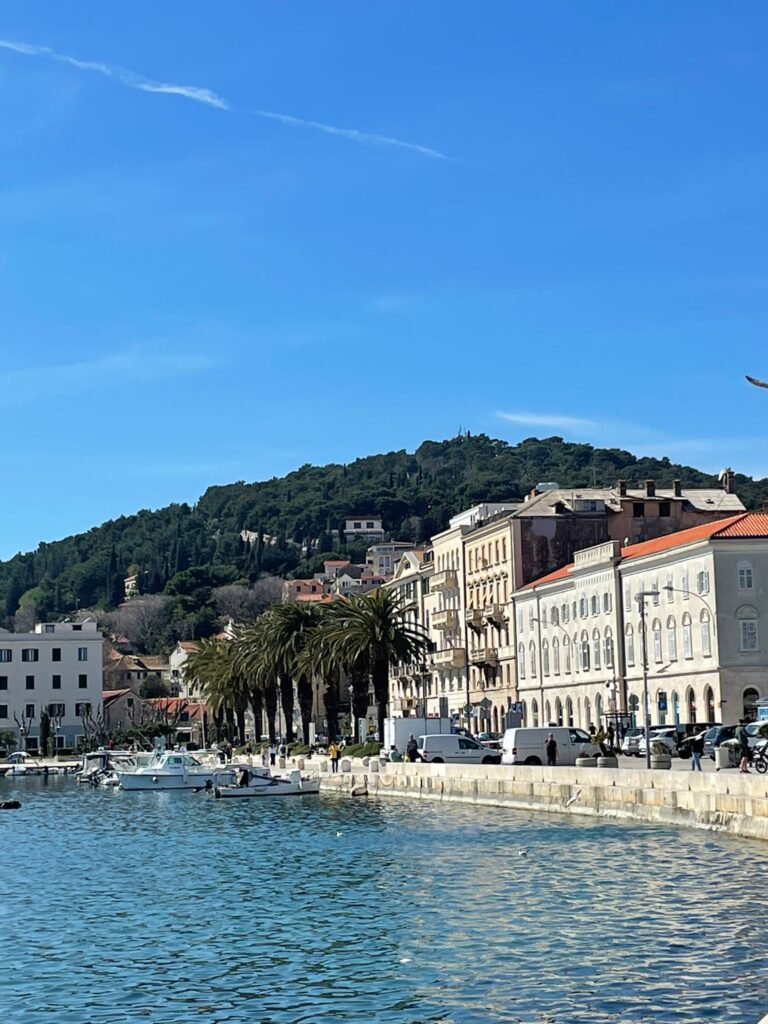
Background on Croatia
After WWII, Croatia became a part of the Socialist Federal Republic of Yugoslavia.
The SFRY as it was also known, comprised of what is now six or seven different countries, depending on how you view Kosovo. Croatia, Bosnia Herzegovina, Slovenia, North Macedonia, Serbia and Montenegro were the others.
The SFRY split up at the beginning of the 1990s due to rising tensions between different ethnic groups, combined with Tito’s death a decade earlier which had weakened the SFRY.
Slovenia and North Macedonia slipped away relatively peacefully. Croatia, Serbia and Bosnia Herzegovina however fought a series of wars across the 1990s. Despite these wars ending within a few years, tensions remain high today between Croats, Bosniaks and Serbs.
On the plus side however, Croatia has prospered since this dark period. It has built a name as an up-and-coming tourist destination with many popular beach spots along the coast. Dubrovnik has gained fame as the setting for popular TV series Game of Thrones. Whilst the tiny nation of under 4 million people has reached three football World Cup semi-finals, getting as far as the final in 2018 before losing to France.

Is Croatia Safe?
As with any country in Central or Eastern Europe (not including Ukraine of course), it is very safe here. Crime is incredibly low and it is safe to go out alone at any time of day or night.
One thing you should not do here however, is go off the beaten track. There are still landmines left over in remote areas from the wars of the past. These spots are generally marked. However, your safety is not guaranteed if you go to lesser explored areas.
If you stick to the touristy spots, you will not need to worry about landmines whatsoever. Therefore please don’t let this disrupt your holiday plans at all.
Natural disasters are little to be concerned about, with the 1667 Dubrovnik earthquake being the last major incident here. Despite that however there was an earthquake in Zagreb in 2020 which caused significant damage to many historical buildings across the capital. Many are inaccessible three years on as restoration works take place. This earthquake caused one death and 26 injuries. Therefore the risk to humans was still low.
When is the Best Time to Visit Croatia?
As with much of Central/Southern Europe, the shoulder season is the best time to go. These are the months straddling both summer and the cooler seasons, when costs, weather and crowds meet a fine equilibrium.
I visited the country in late March and this was a mistake. Seasonal bus transport from Zadar to the Plitvice Lakes had not yet started running. In fact it would begin a day after I left.
Therefore the best months to go would be April-May and September-October.
Costs will be lower than the summer peak season, as will crowds. Whilst weather will still be warm and enjoyable.
How to Visit Croatia
As a Schengen member, there are no passport controls if you come down from neighbouring Slovenia or Hungary. For Westerners, no visa is required to get in. Even coming across from non-Schengen Bosnia Herzegovina is really easy. Of course, you should always check your country’s visa requirements before booking a trip just to be certain you will have no issues.
How to get to Croatia
Croatia is well-connected with direct flights coming from much of Europe. It has several international airports with Zagreb, Dubrovnik and Split amongst the most popular.
Zagreb has flights coming in from Qatar and Israel, yet mostly operates flights to and from other European countries. Dubrovnik offers routes between itself and other international destinations including the USA (Newark) and Dubai. Whilst Split mostly connects with other European spots.
How to get around in Croatia
There are domestic flights within the country with Croatia Airlines. These fly to Brac, Dubrovnik, Osijek, Pula, Rijeka, Split, Zadar and Zagreb.
However the most popular options for travel within the country are bus, train, and boat. Boat travel is a big deal in Croatia as it is the main way to get not just to the islands, but also Dubrovnik. The popular city is located on a strip of land separated from the rest of the country by Bosnia Herzegovina.
Yet it is worth noting that a lot of bus and boat routes are entirely seasonal. April-October are the easiest months to travel here with a full supply of transport routes.
Is Croatia Expensive to Visit?
The currency in Croatia is no longer the kuna. At the beginning of January 2023, the country adopted the euro. Inflation shot up and traders raised prices to combat this. Many others, rounded the conversations up, despite the government insisting 7.5365 kuna should be converted to one euro, and fines would be implemented for anyone who took advantage of this situation.
What this means for tourists is that Croatia costs a little more to visit now.
As an up-and-coming tourist destination on the Mediterranean, it was always going to be a more costly country. It is not completely unaffordable however and not even close to the likes of Italy or France in terms of costs.
In fact, during a week in Croatia I only spent £27 ($34). Therefore it is possible to do on a budget. Although you should bear in mind that this included sacrifices to keep the costs low. Namely, staying in hostels, travelling in the off-season (March) and not going to Dubrovnik or any of the islands. The latter was more out of personal choice than a desire to save money however. I felt from what I’d seen and heard that Dubrovnik would not be significantly different to Split or Kotor in Montenegro.
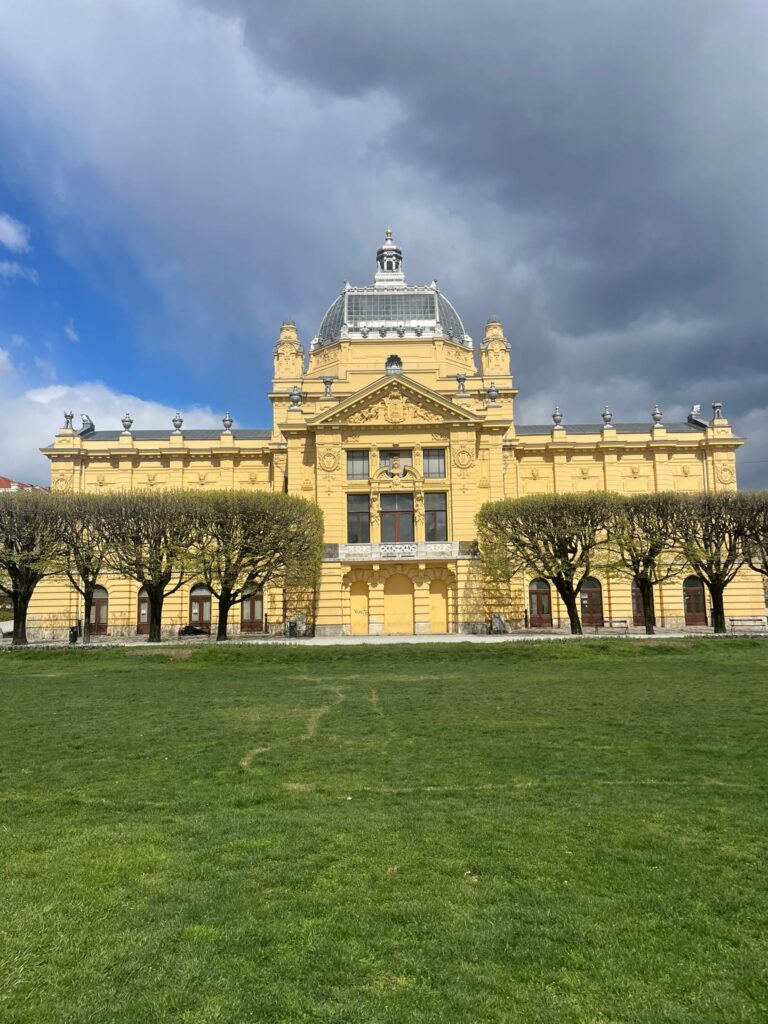
Where Should I Visit During a Week in Croatia?
You are spoilt for choice. And honestly there are far too many options to suggest a perfect itinerary. I will only offer suggestions based on where I’ve actually been. Therefore there will be no mention of the islands or Dubrovnik here. Likewise the Plitvice Lakes, which admittedly were high on my wishlist for this country.
Split
Split is a lovely spot on the coast, and a perfect starting point if you take the bus across the border from Bosnia Herzegovina.
The Beaches of Split
There are several beaches around Split where you can wind down, enjoy the sun, and watch some spectacular sunsets as a warm breeze blows around you.
I personally loved Firule Beach, a serene spot with only a handful of other visitors. There are a couple of small football goals if you fancy a kickaround on the beach, and the end points allow you to sit on the rocks and gaze at the beautiful sunsets until darkness fully descends.
It’s around a 20 minute walk from the old town, and a great spot to get away from Split’s more famous beaches such as Bacvice Beach and Kasjuni Beach. Those tend to be where most of the crowds gather.
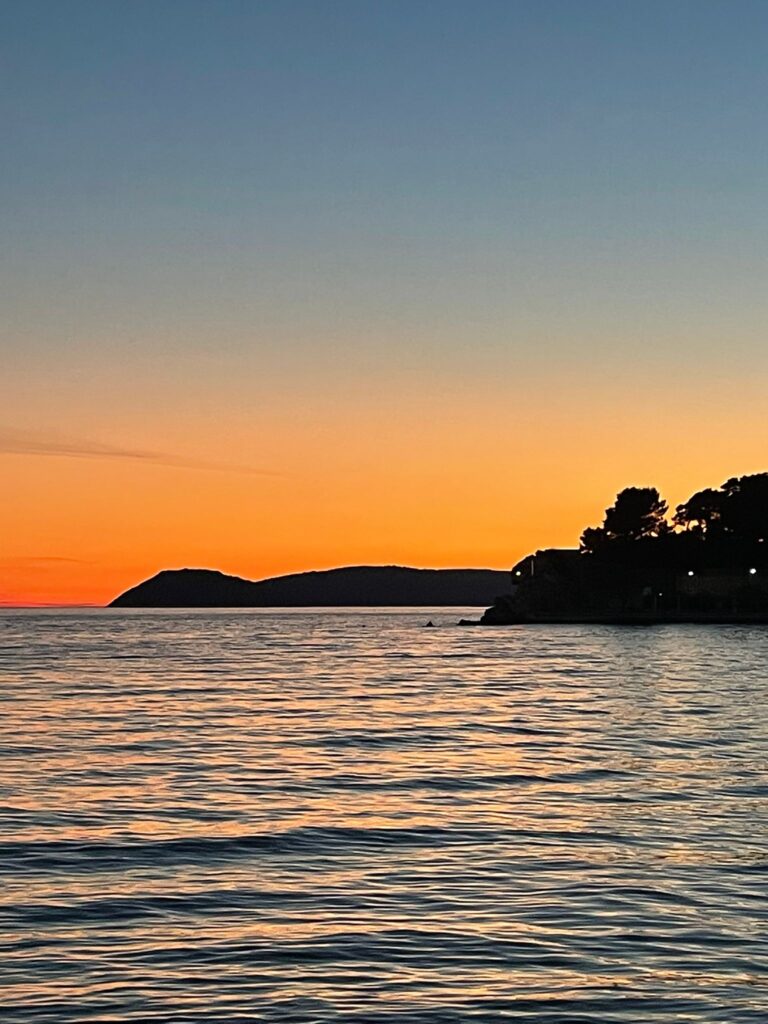
Split’s Old Town
Split is popular for two reasons. The beaches, and the beautiful old town.
The most famous spot here is Diocletian’s Palace. This sprawling Roman fortress has stood the test of time, remaining in relatively good shape since being built in the 3rd century AD. The palace has evolved in recent decades with the old town being built around it.
Today many shops and restaurants exist within the ruins. Yet it maintains its charm which is what makes Split’s old town so attractive. You won’t find big chain brands here. If you want a McDiocletian burger then I’m afraid you’ll be disappointed.
The entire old town has a very Italian feel to it with gelato shops dotted around and European-style restaurants lined up along the harbour, with outdoor dining in abundance.
If you only have time to visit one place in Croatia, make it Split.
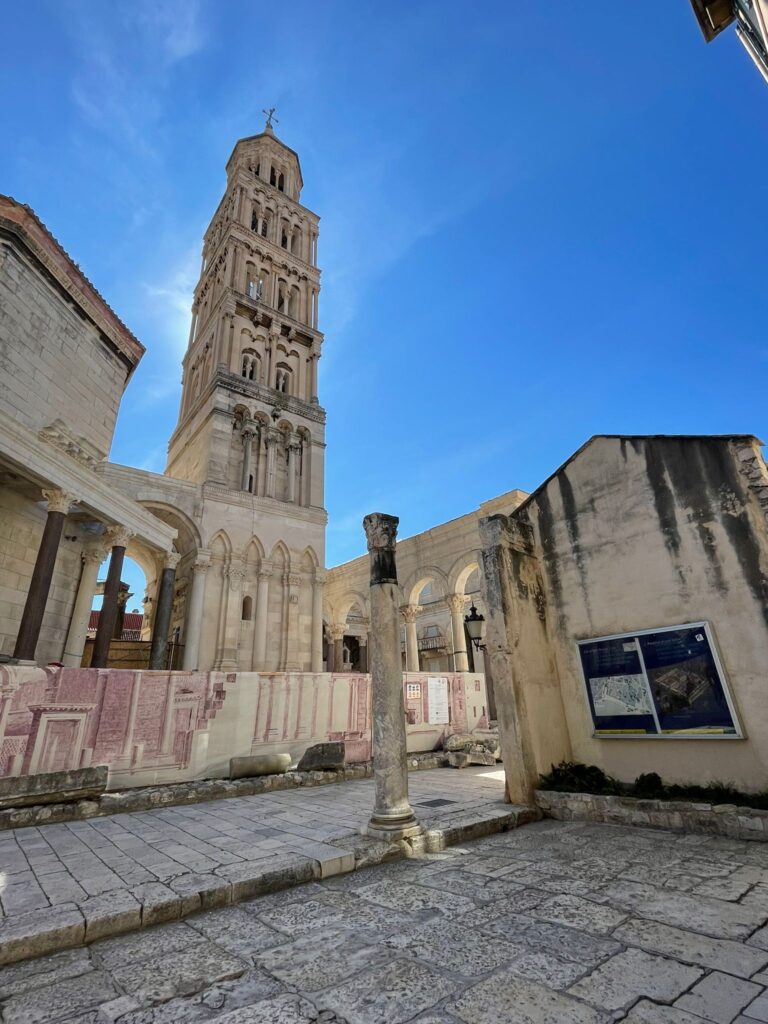
Zadar
Zadar is a small city under three hours north of Split by bus. It also has a charming old town with many Roman Ruins. Although Split is both bigger and better in this regard.
Zadar is unique for one particular reason above all others. The Zadar Sea Organ.
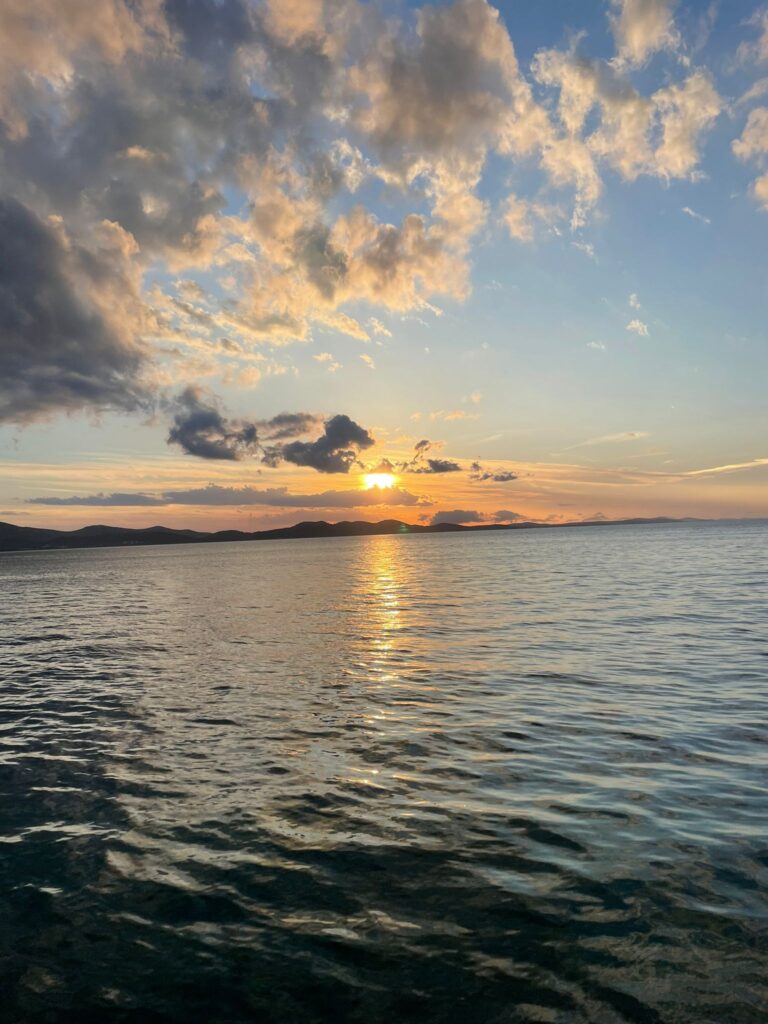
Completed in 2005, a series of tubes were installed in the sea, making noises similar to a musical instrument as the waves make contact with them.
Just a minute away from the Sea Organ, singers play peaceful music. This gives you a choice of serene sounds to listen to whilst watching the sun go down in the evening. Although let’s be honest, the Sea Organ is probably the main reason for coming here in the first place.
It’s worth checking out if you visit Zadar for a day or two. And the town is also a nice spot to chill for a few hours.

Zagreb
My final stop before heading north to Slovenia was the capital, Zagreb. Zagreb is overshadowed by many bigger and better cities throughout Europe, but that doesn’t mean it lacks charm.
St Mark’s Church
The colourful roof makes this place one of the most recognisable in the capital city. Two coats of arms sit alongside each other on the chequered red, white and blue roof. One being for the city of Zagreb. The other representing the former Kingdom of Croatia-Slavonia.
Unfortunately scaffolding dampened the view of this stunning building when I visited in March 2023. Apparently this has been in place since an earthquake three years previously. Therefore it may not be removed any time in the foreseeable future.
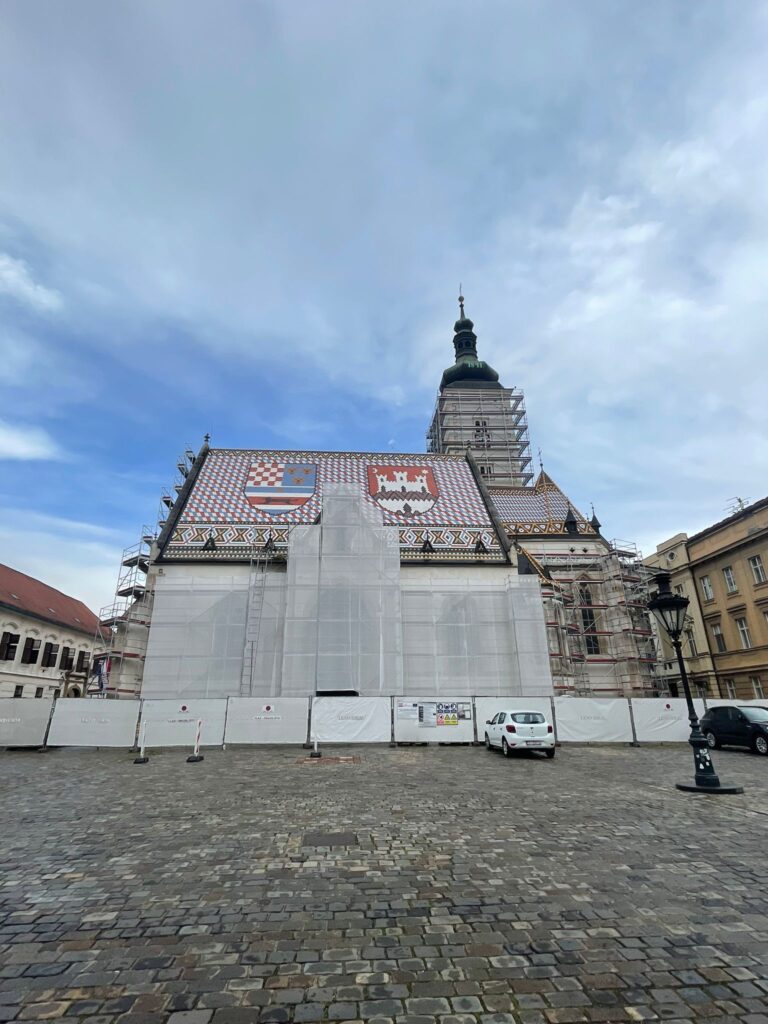
Zagreb Funicular
Famous for being one of the world’s shortest funiculars at only 66m long, it costs under a euro to ride between the upper and lower town.
Honestly though, it’s a little obsolete, having originally been built in 1890. As a mode of transport, you’re better off walking. The funicular still has a place though as a little bit of fun.
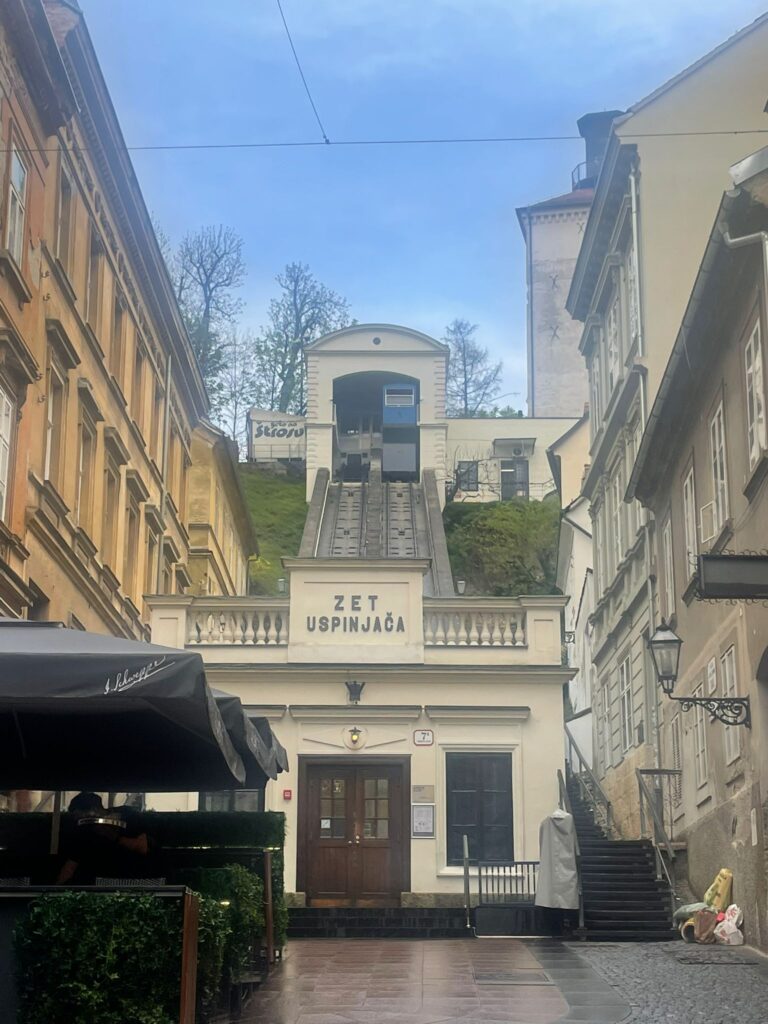
Zagreb Art Pavilion
This stunning yellow building is located by the main train station in Zagreb. It hosts some of Croatia’s finest art works and details the history of fine arts in the country.
However, as of now (November 2023) it is closed as repair works take place to recover from the 2020 earthquake. There is currently no set date for reopening, therefore you will just have to admire this building from the surrounding park for the foreseeable future.
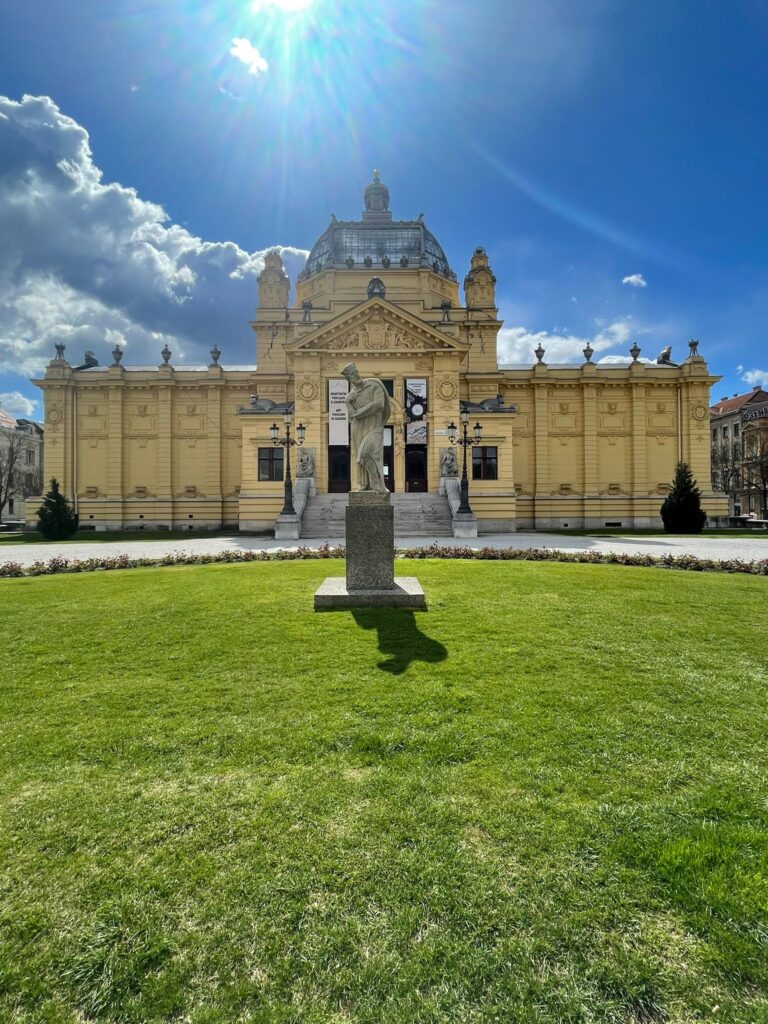
Where to Stay During a Week in Croatia?
As always, I will only offer suggestions on places I have actually been to and have experience of. I only stayed in shared dorm rooms whilst visiting Croatia in 2023, therefore this section is not for you if you have no interest in hostel rooms.
Split – En Route Hostel (£14/$17 Per Night)
Pros
It is very clean here, including the bathrooms which are regularly maintained. There’s a lot of space here, it’s good if you wish to make friends. The lockers are big and the beds have privacy curtains. The rooms are very spacious. Wifi works well.
Cons
There’s no quiet spot here. The only area outside the bedrooms, bathrooms and kitchen is a big open area with a lot of noise. The hostel also seems to have a fair few big group bookings. These groups can be quite rowdy so it’s tricky to sleep in peace sometimes. The kitchen is also closed overnight (perhaps a pro as it is kept cleaner this way). Dorms are for 10-22 people with the bigger rooms being cheapest. Although the large room size and privacy curtains make it tolerable in the 22-bed room.
Overall
A very nice place to stay. Would definitely stay here again. It is not too far from the main spots in Split, perhaps 20 minutes of walking time to Diocletian’s Palace.
Zadar – Sky Hostel (£13/$16 Per Night)
Pros
Rooms are only 4-bed dorms, they are kept very clean. The wifi works well here. Best of all, you can do your laundry for free.
Cons
It is quite a popular hostel, therefore the rooms all tend to fill up. The property is quite small meaning it can get quite noisy at times.
Overall
Highly recommend this place. It has a very homely feel to it and is not far from the main spots in Zadar. I’m confident that you will enjoy staying here.
Zagreb – Chillout Hostel Zagreb (£15/$19 Per Night)
Pros
The location is good, around a 15 minute walk from the main train station, and relatively close to all the main attractions in Zagreb.
Cons
It feels overpriced for what it is. Had a bit of a grungy feel to the place. It also had no lockers you could lock. Therefore it isn’t the safest place to stay with strangers.
Overall
Was not a massive fan of this place. Personally I’d recommend looking at other options.
Final Thoughts on Visiting Croatia
A week in Croatia is not enough to see everything this beautiful country has to offer. I would recommend staying for a minimum of two weeks here, and ensuring you go during the shoulder season when everything is open, or the high season if you can tolerate higher costs and more crowds.
With the knowledge I now have, a week in Croatia would be spent best focusing on Split, Plitvice Lakes, and Zadar. If you have an extra week then Dubrovnik and one island would be a worthwhile way to spend it. Zagreb isn’t a bad city, but quite frankly you have better options here. Therefore your time would be better spent only visiting Zagreb if it is on your route. A day in Zagreb is enough, likewise in Zadar. Although when travel times are factored in, two days may be better for a more relaxing trip.
In the future I will return to spend a week in Croatia once again. Or perhaps two, or three, or four weeks. When that time comes I will update this post with more information and suggestions on what to do.
If you enjoyed this, you can check out everywhere else I have been on my journey to visit every country in the world. Posts about all countries are all on my destinations page.
